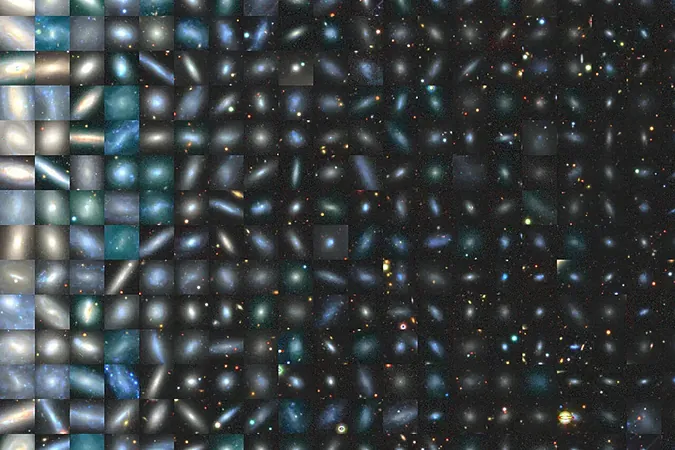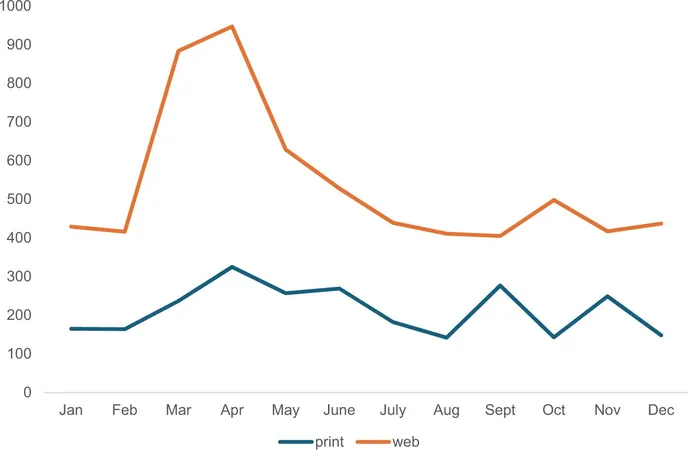
The Milky Way: A Cosmic Oddity Among Galaxies? New Research Raises Intriguing Questions!
2024-11-20
Author: Jia
The Milky Way: A Cosmic Oddity Among Galaxies? New Research Raises Intriguing Questions!
For years, the Milky Way has been a cornerstone for researchers studying galaxy formation, but groundbreaking new studies are throwing this assumption into doubt. Three enlightening studies published in the November 18 edition of The Astrophysical Journal suggest that our galaxy might not be the typical example scientists have long believed it to be.
"While the Milky Way has served as an extraordinary laboratory for understanding the physics of galaxies and dark matter, it is just one specimen among countless others. Its characteristics may not reflect the true nature of other galaxies in the universe," stated Risa Wechsler, a professor of physics in the School of Humanities and Sciences. She emphasized the pressing need to identify and analyze galaxies similar to our own.
This led Wechsler to cofound the innovative Satellites Around Galactic Analogs (SAGA) Survey, an initiative designed to scrutinize galaxies that share a similar mass to the Milky Way. After a decade and extensive research efforts, the SAGA team successfully identified and analyzed 101 Milky Way-like analogs. The findings reveal that, in various respects, the Milky Way's evolution is strikingly distinct from its counterparts.
"Our research indicates that we cannot limit our understanding of galaxy formation to the Milky Way alone," Wechsler remarked. "We must consider the entire spectrum of similar galaxies across the cosmos."
The Dark Matter Conundrum
While the Milky Way is composed primarily of ordinary atomic matter—like hydrogen and iron—this conventional matter constitutes only about 15% of all matter in the universe. The remaining 85%, known as dark matter, remains a tantalizing enigma. "No one truly knows the composition of dark matter. It interacts neither with ordinary matter nor with light," Wechsler explained. "You could be surrounded by dark matter right now without even knowing it."
Significantly, galaxies are believed to form within vast regions of dark matter known as halos, which, despite their invisibility, exert a gravitational force powerful enough to attract ordinary matter and facilitate stellar formation.
A central goal of the SAGA Survey is to investigate how these dark matter halos influence galactic evolution. Initially, the team focused on small satellite galaxies that orbit larger host galaxies like the Milky Way. In their study, the researchers sifted through numerous observational data to identify four of the brightest satellites of the Milky Way, including well-known companions, the Large and Small Magellanic Clouds (LMC and SMC).
Utilizing advanced telescopic imaging techniques, the SAGA team discovered 378 satellite galaxies surrounding 101 host galaxies comparable in mass to the Milky Way. "This ambitious project has presented its challenges," Wechsler pointed out, "as we had to isolate these orbiting galaxies from countless background objects—a true needle-in-the-haystack endeavor!"
Surprising Insights
In their first study, the researchers found that the number of satellite galaxies orbiting a host can range from zero to up to 13. Interestingly, while the Milky Way's four visible satellites fit snugly within this range, it offers fewer satellites compared to similar mass galaxies—thereby classifying it as an outlier.
The second study turned its focus to star formation in satellite galaxies, a crucial factor in understanding galactic development. The results revealed that in other typical host galaxies, even the smaller satellites continue to form stars. Conversely, in the Milky Way, star formation predominantly occurs only within the massive LMC and SMC, highlighting that all smaller satellites have ceased star formation.
"We're left with a puzzle," Wechsler noted. "What unique conditions within the Milky Way led to the cessation of star formation in smaller, lower-mass satellites? It’s possible that the Milky Way's unique mix of older satellites that have stopped forming stars, alongside newer active ones—the LMC and SMC—have just recently entered the Milky Way's dark matter halo."
Additionally, the research pointed out that star formation tends to halt in satellite galaxies that are closer to the host galaxy, likely due to the gravitational influence of dark matter halos surrounding the larger galaxy.
"What fascinates me now is studying the role of dark matter at smaller scales, particularly those smaller halos that envelop these tiny satellites," Wechsler concluded, emphasizing the importance of this pursuit.
Conclusion: The Universe's Greatest Mystery Awaits
As researchers continue to unearth the mysteries surrounding the Milky Way and its unusual behavior compared to other galaxies, the findings pose exciting prospects for redefining our understanding of the universe. Stay tuned, as science might soon reveal the secrets behind the cosmic oddity that is the Milky Way!






 Brasil (PT)
Brasil (PT)
 Canada (EN)
Canada (EN)
 Chile (ES)
Chile (ES)
 España (ES)
España (ES)
 France (FR)
France (FR)
 Hong Kong (EN)
Hong Kong (EN)
 Italia (IT)
Italia (IT)
 日本 (JA)
日本 (JA)
 Magyarország (HU)
Magyarország (HU)
 Norge (NO)
Norge (NO)
 Polska (PL)
Polska (PL)
 Schweiz (DE)
Schweiz (DE)
 Singapore (EN)
Singapore (EN)
 Sverige (SV)
Sverige (SV)
 Suomi (FI)
Suomi (FI)
 Türkiye (TR)
Türkiye (TR)